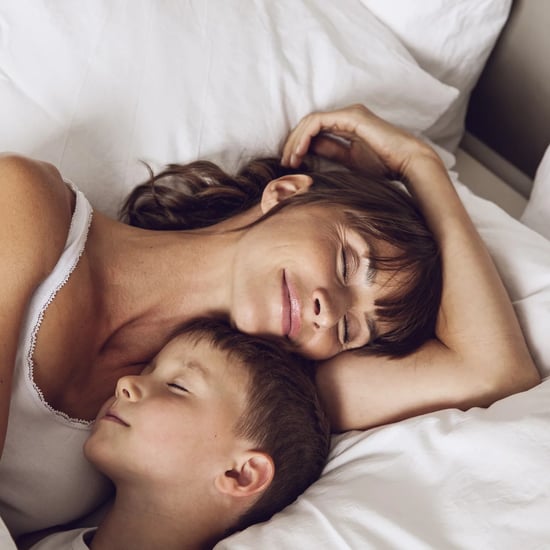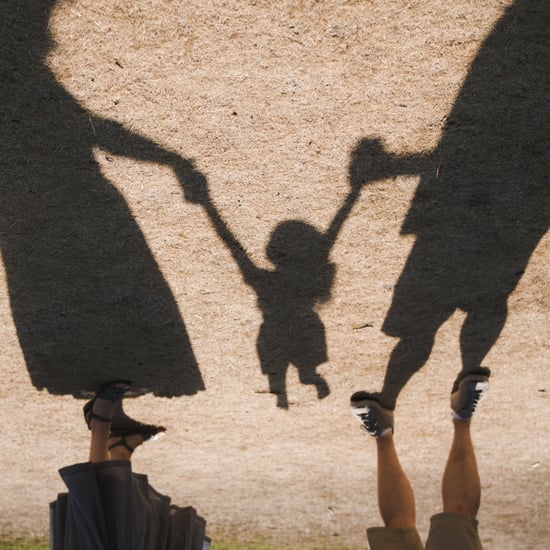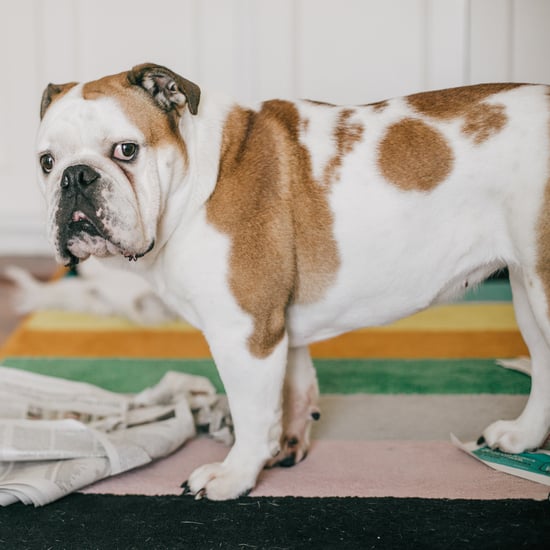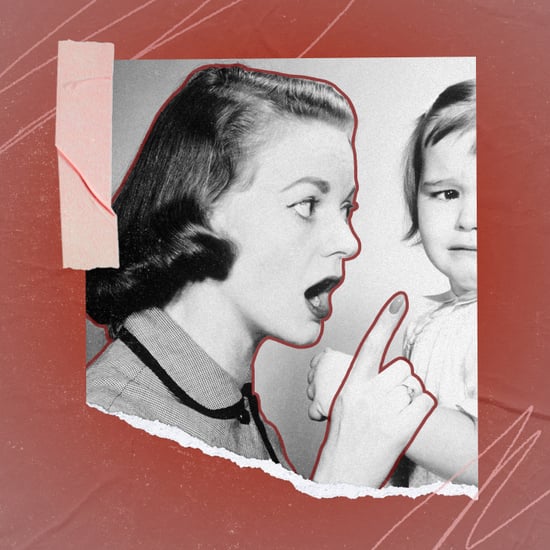How Do I Share a Small Bedroom With My Baby?
Worried About Sharing Your Tiny Room With a Newborn? We Asked the Experts What to Know
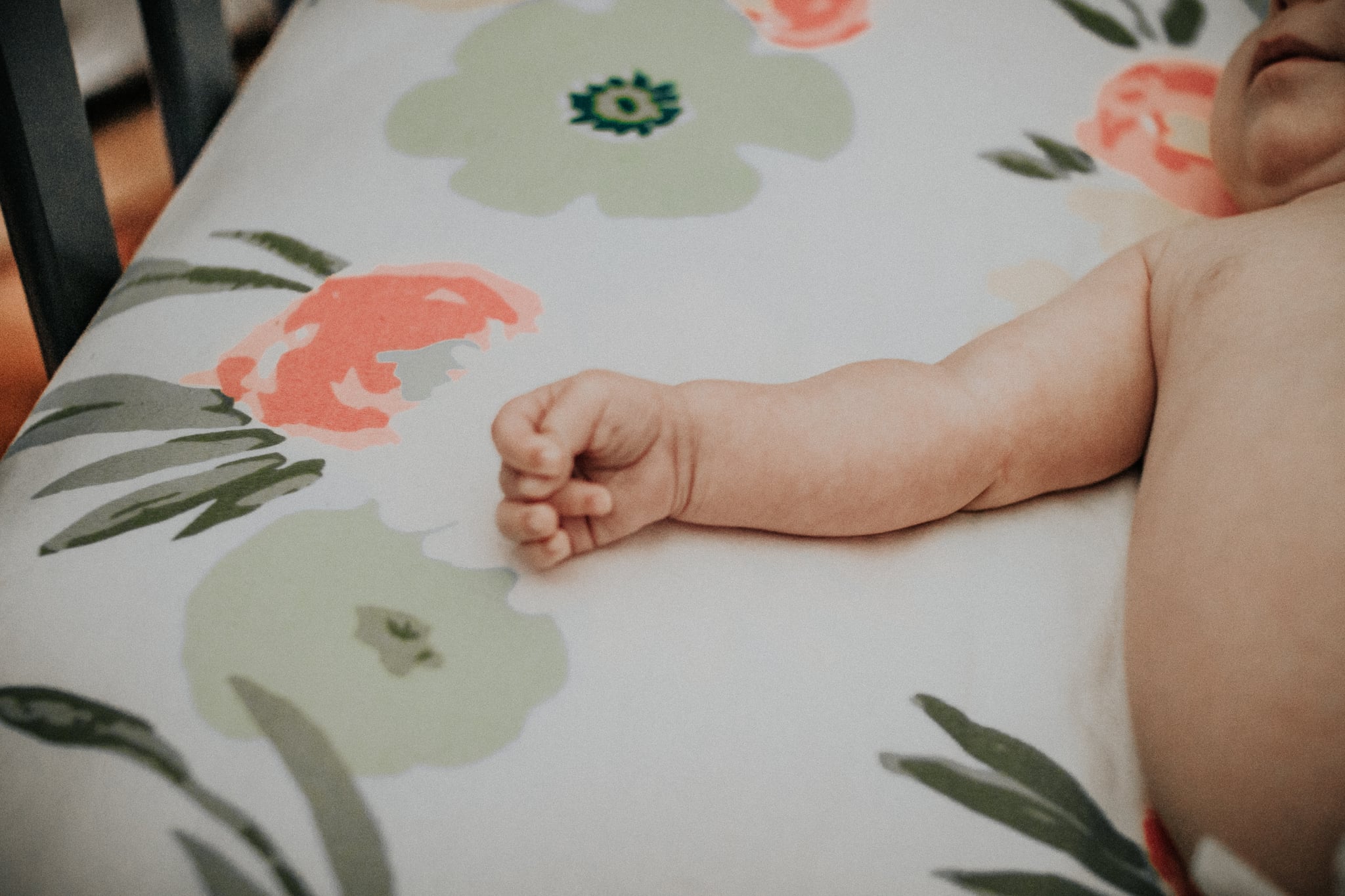
Whether this is your first rodeo or you're a seasoned pro, sharing a room with a newborn may sound daunting . . . babies aren't known as the best roommates. Of course, you want to bring your baby home into the safest environment — which usually means getting over the fear and sharing a room with your baby — but it's only natural to worry about the logistics of doing that. (After all, babies maybe be small, but they take up a lot of space!) To help you prepare to room-share, we've asked experts about exactly what you need to know, so you can turn your stress into success and safely shack up with your newborn.
Why should I share a room with my baby?
Safety is the biggest motivator for room sharing with your baby. The American Academy of Pediatrics (AAP) in their 2016 updated recommendations says that babies should ideally share a room with their parents for a year, or at minimum six months, to reduce the risk of sudden infant death syndrome (SIDS) by up to 50 percent. With your newborn sleeping in your room, you can see and hear any dangers or sleep concerns that may cause harm to your baby.
How should I set up my baby's crib?
The first thing to check off your list when purchasing or setting up a crib for your baby is to ensure that it meets the recommended safety standards. The AAP advises that cribs meet the standards of the Consumer Product Safety Commission (CPSC), who provide guidelines for slat spacing, mattress fit and firmness, and crib walls. Additionally, the AAP advises parents to use new cribs not only to ensure that the current safety standards are met and no recalls posted, but also to guarantee that all the correct hardware is available and assembly instructions are available.
When outfitting your baby's sleep space, the APP says that cribs should not have bumpers, pillows, toys, blankets, or any kind of soft bedding inside. Instead, keep the crib bare with just a snug, fitted sheet over the mattress. Basically, "a crib or bassinet should be kept minimal and very simple," says Susete Pinto, a pediatric sleep consultant and founder of Night Night Baby Sleep Consulting. So save the cute Baby Shark stuffed animal until your child is older. Pinto adds, "If parents worry about baby being cold, a newborn up to 10 weeks may be swaddled to help keep warm. After 10 weeks, a wearable blanket is safest for the baby to sleep in while staying warm."
Can I share a bed with my baby?
Though it's extremely common, the AAP still does not recommend bed-sharing with your baby because it introduces additional risk factors (like soft bedding) that could cause unintentional harm to your baby. Syeda Amna Husain, M.D., FAAP, founder of Pure Direct Pediatrics supports and extends the AAP guidelines to breastfeeding in bed as well — recommending that parents even refrain from bringing a baby into their bed to feed, if at all possible. "It's better to feed the baby in a place outside of the bed so you're not tempted to fall back asleep," she says. "If there's even the slightest possibility that you might fall asleep, it's safer to move out of an area that has pillows, blankets, or other sleeping members of the family nearby to decrease the risk of suffocation."
Can I share a small room with my baby?
There are plenty of options available to small space dwellers that still provide a safe sleeping environment for your little one. Mini cribs, portable cribs, or bassinets are all fantastic choices for a small room because not only do they take up less space, but most often they are light-weight and easy to move around if needed. Just be sure to select one that meets the AAP's and CPSC's recommendations.
How do I get sleep with my baby in the same room?
Newborns can be loud little sleepers with all their grunts, movements, and heavy breathing; coupled with the stress of having a newborn, it's natural to worry about the quality of your shut eye. Pinto understands that it may be difficult for parents and baby to simultaneously get quality sleep in a shared space, so she suggests using a white noise machine to drown out some of those extra sounds. "And as your baby grows, a room divider is an amazing way to help differentiate between your baby's space and your space, so everyone can get the quality sleep they need," she says. Additionally, the AAP believes that parents should help their babies create good sleep habits by practicing safe sleep behaviours, keeping outside factors (like temperature and lighting) in check, and creating a calming bedtime routine to see if it makes a difference in your baby's sleep patterns. In turn, creating good sleep habits for your baby, will allow you to get the adequate sleep you need. As with all the changes that come with a newborn baby, learning to sleep in the same room as your baby takes some time, but there's no need to worry. Eventually, your parental instinct will kick in, and you will find what is best and safest for your family.
